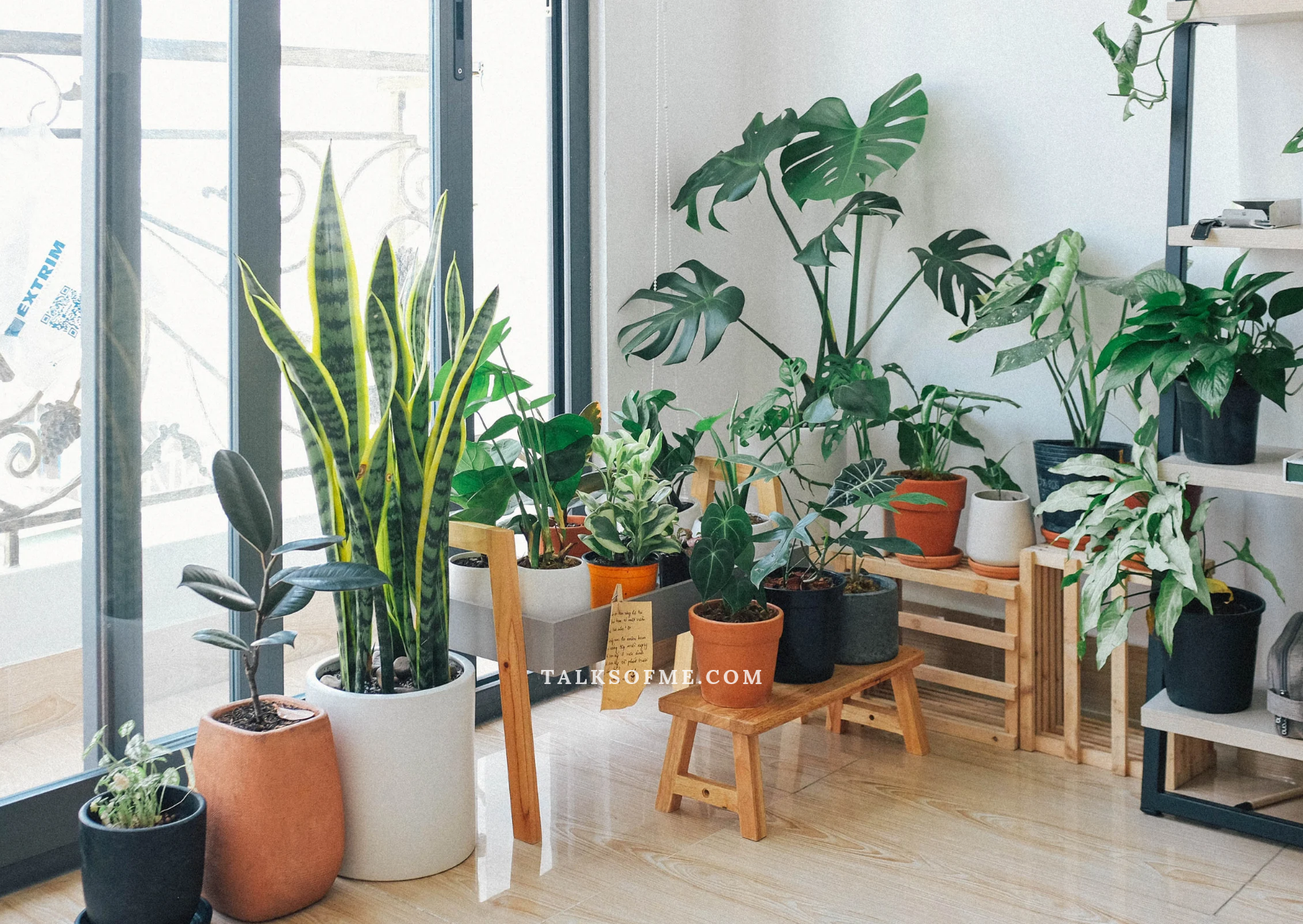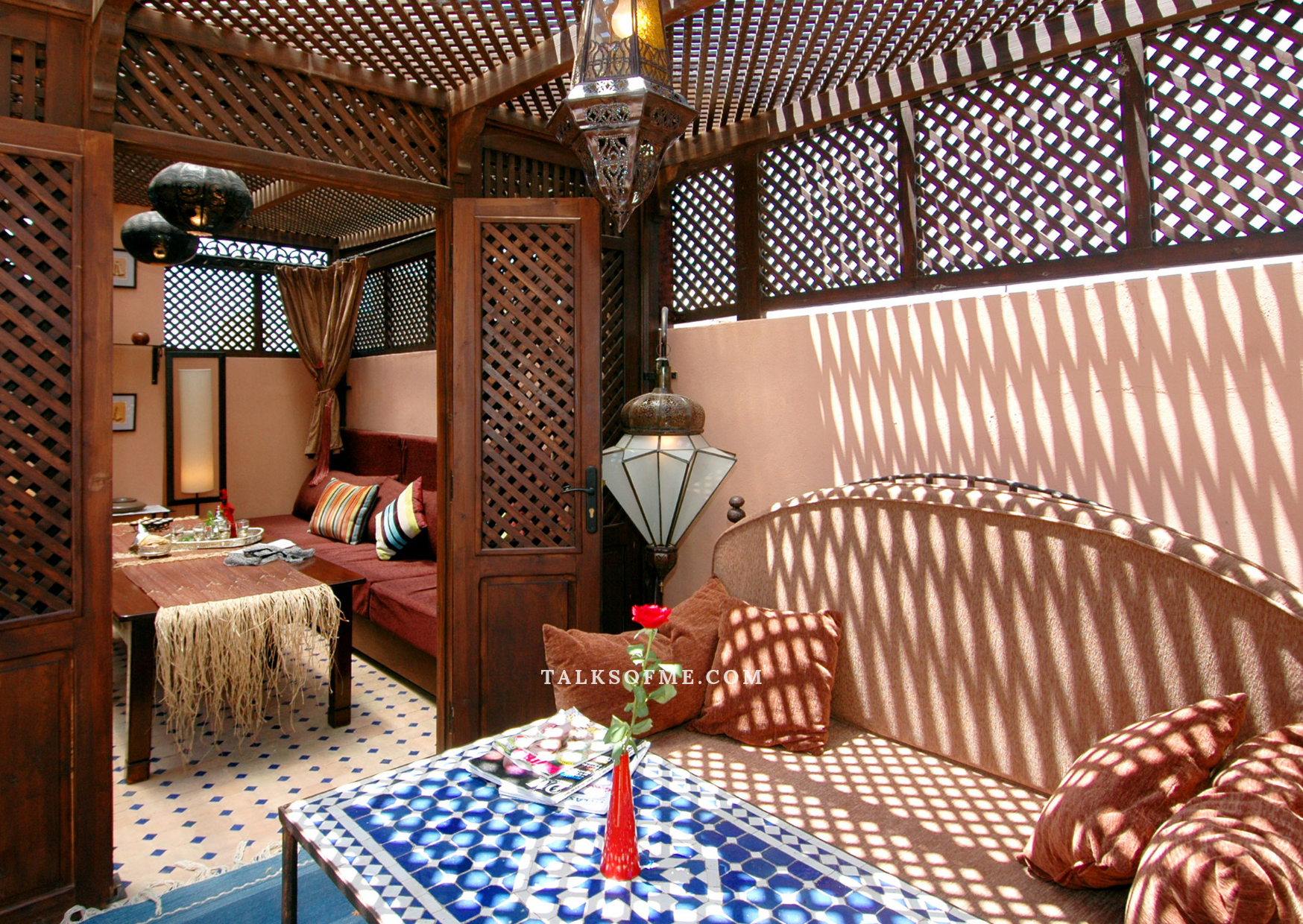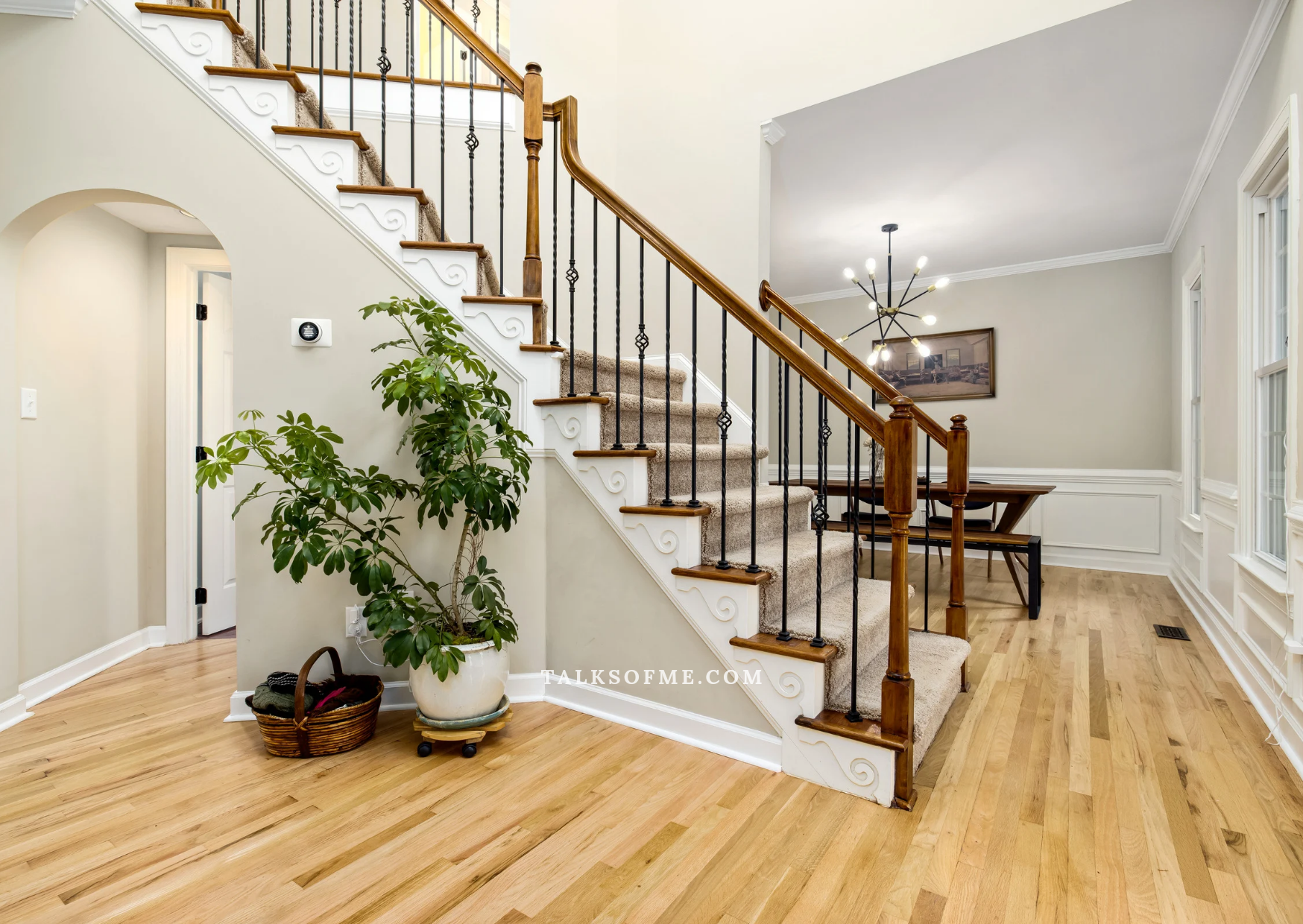Biophilic design
Biophilic design is a trend that has been gaining momentum in recent years. It is the idea of bringing nature into the home by incorporating natural elements such as plants, natural textures, and materials like stone or wood. The philosophy behind biophilic design is that connecting with nature has a positive impact on our mental and physical health. This design trend is not just a passing fad, but rather a response to our increasingly urbanized lives and the need for a connection with the natural world.
One of the key principles of biophilic design is to create a sense of connection with the natural world. This can be achieved by using natural materials such as stone or wood in the design of a space. For example, using a natural stone wall as a focal point in a living room can create a sense of warmth and grounding. Similarly, incorporating natural textures such as woven fabrics or rattan furniture can add a sense of texture and depth to a room.
Biophilic design is the incorporation of plants. Plants not only add a sense of natural beauty to a space, but they also help to improve air quality and reduce stress levels. Plants can be incorporated in a variety of ways, from potted plants on shelves or tables to larger plants as room dividers or even hanging plants.
Lighting is also an important element of biophilic design. Natural lighting from windows or skylights can help to create a sense of connection with the outdoors. Artificial lighting can also be used to mimic natural lighting, such as warm, soft lighting that resembles the glow of a sunset.
Biophilic design is not limited to residential spaces, as it can also be incorporated into commercial spaces. For example, a company may incorporate natural materials and plants into their office design to create a more relaxed and welcoming environment for employees.
Incorporating biophilic design into outdoor living spaces is also becoming increasingly popular. This can include adding natural elements such as rocks, water features, and plants to create a more natural and relaxing outdoor environment.
The benefits of biophilic design, there are some common misconceptions. One is that biophilic design is only for those with large budgets or homes. In reality, biophilic design can be incorporated into any space and budget. Another misconception is that biophilic design is only for those with a green thumb. However, incorporating plants into a space does not have to be difficult or time-consuming, and there are many low-maintenance plant options available.
Biophilic design is a design trend that is here to stay. It offers a way to connect with nature and improve our mental and physical well-being, while also creating beautiful and functional spaces. Whether you are redesigning your home or office, or simply looking to add a touch of nature to your living space, biophilic design is a trend that is definitely worth considering.
Biophilic design is an architectural and interior design approach that aims to connect people with nature by incorporating natural elements and features into the built environment. It focuses on creating spaces that mimic natural environments and incorporate natural materials and textures, such as wood, stone, and water, as well as living elements like plants and animals. The goal of biophilic design is to enhance people's well-being, productivity, and overall quality of life by fostering a sense of connection with nature.
Benefits of incorporating biophilic design elements into a home
Incorporating biophilic design elements into a home has numerous benefits for both physical and mental health. Here are some of the benefits:
Improved air quality
Incorporating plants into a home can help to filter the air, removing pollutants and allergens.
Reduced stress
Studies have shown that exposure to natural elements like plants, wood, and water can help to reduce stress levels and promote relaxation.
Increased productivity
Incorporating natural elements into workspaces can help to increase productivity and creativity, as well as reduce absenteeism.
Enhanced well-being
Exposure to natural elements has been linked to improved well-being, including better mood and increased feelings of happiness.
Improved physical health
Being surrounded by natural elements can have physical health benefits, including lower blood pressure and reduced symptoms of depression and anxiety.
Incorporating biophilic design elements into a home can help to create a healthier and more harmonious living environment.
Incorporate plants into biophilic design
Plants are a key element in biophilic design, and there are many ways to incorporate them into a home. Here are some ideas:
Create a green wall
Install a vertical garden or create a wall of plants using hanging pots or shelves.
Use potted plants
Place plants throughout the home in pots of various sizes and styles.
Use hanging plants
Hang plants from the ceiling or place them on shelves to create a layered effect.
Incorporate plants into furniture
Use furniture pieces like plant stands or coffee tables with built-in planters to incorporate plants into the design.
Use plants as room dividers
Use plants to create natural room dividers or partitions.
Use natural materials for planters
Use natural materials like stone, wood, or clay for planters to further emphasize the connection to nature.
When incorporating plants into biophilic design, it's important to consider the lighting, temperature, and humidity requirements of each plant species to ensure their survival and growth.
Natural materials in biophilic design
Natural materials play an important role in biophilic design, as they help to connect people with nature. Here are some natural materials that can be used in biophilic design:
Wood
Wood is a versatile and warm material that can be used for flooring, furniture, walls, and ceilings.
Stone
Stone can be used for flooring, walls, and countertops. It has a natural look and feel that helps to create a connection to the outdoors.
Water
Water features like fountains, ponds, and water walls can create a calming and relaxing atmosphere.
Plants
Plants bring a natural element into a space and have many health benefits. They can be used in various ways, such as living walls, potted plants, and hanging plants.
Natural fabrics
Natural fabrics like wool, cotton, linen, and silk can be used for upholstery, curtains, and bedding.
Natural lighting
Natural lighting can be achieved through large windows, skylights, or by using reflective surfaces like mirrors.
Natural textures
Natural textures like rough-hewn wood, stone, or woven fibers can be used for accent walls or in furniture.
When using natural materials in biophilic design, it's important to consider sustainability and environmental impact. Choosing materials that are locally sourced, renewable, or recycled can help reduce the negative impact on the environment.
Biophilic design differ from traditional interior design
Biophilic design differs from traditional interior design in that it focuses on incorporating natural elements into the space, rather than just focusing on aesthetics or functionality. Biophilic design takes into account the human need for connection to nature, and aims to create spaces that promote wellbeing and health by bringing elements of nature indoors. This includes using natural materials, such as wood or stone, incorporating natural patterns and textures, and incorporating plants or water features into the design. Traditional interior design, on the other hand, may prioritize trends or personal style preferences over the benefits of connecting with nature.
Principles of biophilic design
The key principles of biophilic design include:
Nature in the Space
Incorporating natural elements such as plants, water, and natural light into the built environment.
Natural Analogues
Using materials, colors, and patterns that mimic natural elements such as wood or stone.
Complexity and Order
Creating environments that feature a balance of order and complexity, as seen in natural environments.
Prospect and Refuge
Designing spaces that provide both open views to the surrounding environment (prospect) and enclosed areas of safety and comfort (refuge).
Biomorphic Forms and Patterns
Incorporating shapes and patterns that are inspired by nature, such as curves or fractals.
Material Connection with Nature
Using materials that are locally sourced, renewable, and have a low environmental impact.
Energy and Space
Creating spaces that promote physical movement, connection, and social interaction.
Evolving and Dynamic
Designing spaces that change and evolve over time, creating a sense of connection to the natural world.
Biophilic design elements be incorporated into a small space
Biophilic design can be incorporated into a small space in various ways. Here are some ideas:
Hanging plants
Hanging plants can add a natural touch to a small space without taking up much room. You can hang them from the ceiling or mount them on the wall.
Natural light
If possible, maximize natural light in your small space by opening up windows or adding skylights. This will create a sense of connection with the outdoors and promote a positive mood.
Natural textures
Incorporate natural textures such as wood or stone in your small space. This can be done by adding wooden furniture or using stone tiles on the floor or walls.
Vertical gardens
If you don't have space for a traditional garden, a vertical garden is a great alternative. You can use a wall or a freestanding structure to create a living wall of plants.
Natural scents
Adding natural scents to your small space, such as essential oils or fresh herbs, can create a calming and rejuvenating environment. You can also consider using natural candles or diffusers.
Nature-inspired artwork
Artwork inspired by nature can be a great addition to a small space. It can provide a sense of calmness and connection to the natural world.
Lighting enhance the biophilic design of a space
Lighting plays an essential role in biophilic design as it can enhance the natural elements and create a more inviting and comfortable space. Here are some ways lighting can be used to enhance biophilic design:
Natural light
Maximizing the use of natural light is a key aspect of biophilic design. It is important to maximize the amount of natural light entering the space and minimize any obstructions to it. Large windows, skylights, and other design features can be incorporated to maximize the natural light.
Artificial lighting
Artificial lighting can be used to create a warm and inviting ambiance that complements the natural elements in the space. Warm and soft lighting can create a calming effect and mimic the natural sunlight.
Accent lighting
Highlighting natural features such as plants or natural materials can be achieved through accent lighting. Small spotlights can be installed to highlight the textures of the materials and create a natural and calming effect.
Dimmers
Dimmer switches can be used to adjust the lighting to different levels, creating different moods and ambiance in the space.
Colored lighting
Colored lighting can be used to mimic the natural environment, such as green or blue, which are commonly associated with nature.
Lighting is an essential element in biophilic design and should be considered carefully to enhance the natural elements and create a more comfortable and inviting space.
Biophilic design be incorporated into outdoor living spaces
Biophilic design can be easily incorporated into outdoor living spaces as it focuses on incorporating natural elements into the decor. Here are some ways to incorporate biophilic design into outdoor living spaces:
Use natural materials
Use natural materials such as wood, stone, and brick to create an outdoor living space that feels organic and natural.
Incorporate water
Adding a water feature, such as a fountain or small pond, can create a calming and relaxing atmosphere.
Use plants
Integrate plants, such as shrubs, trees, and flowering plants, to create a natural atmosphere and provide shade and privacy.
Consider the views
When designing an outdoor living space, consider the views around it. If there is a beautiful natural setting, position seating areas to take advantage of the view.
Use natural colors
Use natural colors such as greens, browns, and blues to create a natural color palette that complements the surrounding environment.
Provide shelter
Create a sheltered area such as a pergola, gazebo or canopy to protect against the sun or rain while still allowing a connection to the natural environment.
Incorporate natural lighting
Use natural lighting such as the sun or moonlight to enhance the natural ambiance of the space.
By using natural materials, integrating water and plants, and considering the surrounding views, biophilic design can be successfully incorporated into outdoor living spaces.
Misconceptions about biophilic design
There are a few common misconceptions about biophilic design, including:
It's only about adding plants
While adding plants is certainly a key element of biophilic design, it's not the only way to incorporate nature into a space. Other elements, such as natural light, water features, and natural materials like wood and stone, can also be used.
It's only for large, open spaces
Biophilic design can be incorporated into spaces of all sizes, from small apartments to large homes. It's all about creating a connection with nature, no matter the scale.
It's too expensive
While incorporating natural elements like plants and natural materials can be costly, there are many budget-friendly ways to incorporate biophilic design elements into a space. For example, using natural light or adding a small water feature can be relatively inexpensive.
It's just a passing trend
Biophilic design is more than just a passing trend. It's based on the idea that connecting with nature has a positive impact on our mental and physical health, and as such, it's likely to remain a popular design approach for years to come.
It's not practical for modern lifestyles
While it's true that some biophilic design elements may require a bit more upkeep than others, many can be incorporated into a modern, busy lifestyle with minimal effort. For example, adding plants that require low maintenance or using natural materials that are easy to clean can be practical for a variety of lifestyles.
This trend focuses on incorporating natural elements into the home decor, such as plants, natural textures, and materials like stone or wood. It's based on the idea that connecting with nature has a positive impact on our mental and physical health.










कोई टिप्पणी नहीं: